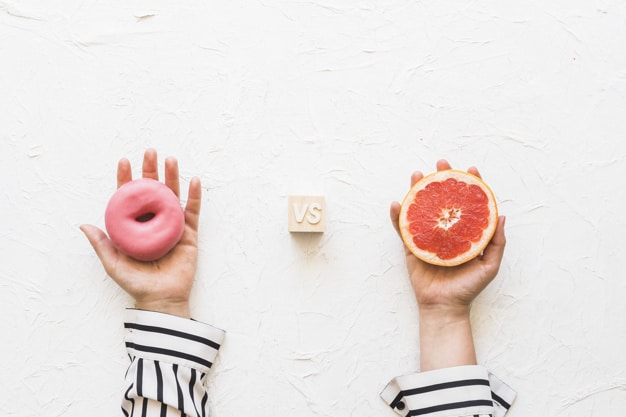In today’s low-carb lovin’ era of Ketogenic craze, fruits (and even veggies!) have gotten a pretty bad rep. While it could be from the traumatic memory of your mom forcing you to finish your broccoli before you could leave the dinner table, we’re guessing it has more to do with the dreaded s-word: sugar.
Most of us are well aware that too much sugar in our diets can lead to a slew of not-so-sweet side effects (including dropping some major cash on a new wardrobe that actually fits…). However, somewhere amongst the carb-conscious chaos, the sugars found in fruits and veggies were labeled in the same vein as their overly-processed counterparts. Soon, people were villainizing carrots and cantaloupes in the same way that they would for cookies and cakes. Like, what?!
So today, we’ve decided to drop some truth bombs on this sugar situation and dive into the distinction between the natural sugars found in fruits and veggies versus the type that’s made in a fashion somewhat similar to Frankenstein’s creation, and then added to many packaged products that seem to find their way into the American die. Think Twinkies, Koolaid, and basically anything that comes in a box and has a cartoon as it’s main spokesperson. Spoiler alert: they are NOT the same.
Added sugar wrecks your body in a way that natural sugar does not. Sucrose, otherwise known as table sugar, as well as high fructose corn syrup, are two very common forms of added sugar found in most processed foods on the market. These sneaky sweet sources are called disaccharides because they are made up of two different molecules, glucose and fructose (which are each considered a monosaccharide since they’re single sugar units). The problem? When processed together, the body absorbs more fructose than it would if you’d have consumed it alone. This leads to a domino effect of not-so-fab side effects like increased insulin release and fat storage on the bod.
A one-sided relationship: we love our sweets but they definitely don’t love us back. Added sugar may taste pretty damn good in the moment, but like that deadbeat boyfriend, it leaves a trail of destruction in its path once our body gets to work processing it. This is where natural sugar really leads the pack as the superior sweet source. When you decide to eat a bowl of fruit vs a bowl of Fruitloops, you’re getting a host of body-lovin benefits: Fiber that’ll keep you full and slow down the release of sugars into the bloodstream (so you don’t have to ride that blood sugar spike & drop roller coaster), essential vitamins and minerals, and antioxidants that’ll keep you in tip-top shape from the inside out.
Comparing apples to apple(jack)s: Ever feel like you relate to the cookie monster on a deeper level than you’d care to admit? Feel like you were born with an extra set of sweet teeth rather than just a sweet tooth? We feel you. So when the World Health Organization released a statement recommending that we limit our consumption of added sugar to less than 25-50 grams a day, we were a little sugar #shook.
If you consider that a single 12oz can of coca-cola has about 40 grams of added sugar, then you’re already fast approaching your daily limit with just one drink! But what if you swapped that sugar-bomb soda with a naturally sweet equivalent? For the same sugar “price” as a coke, you could eat…
-2 and a half apples
-4 oranges
-More than an entire carton of blueberries
-80 (!!!) baby carrots
AND more cucumber than you’d ever want to consider eating at one time
We’re sure you’ve got the gist. If you want to #lookgoodfeelgood, than getting your sweet fix from fruits and veggies is going to be your best bet for whole body health and #bikinibod results. We recommend trying the Low Sugar Bundle – these delicious refreshing flavors will keep you healthy and happy while giving the peace sign to your crazy sugar cravings.
—-
About the writer: Jamie is a forever SoCal gal who could define herself as a fitness & nutrition nut living in the beautiful San Diego, California. Through her studies post-college in both nutrition and marketing, Jamie has fallen in love with all things health & wellness!
